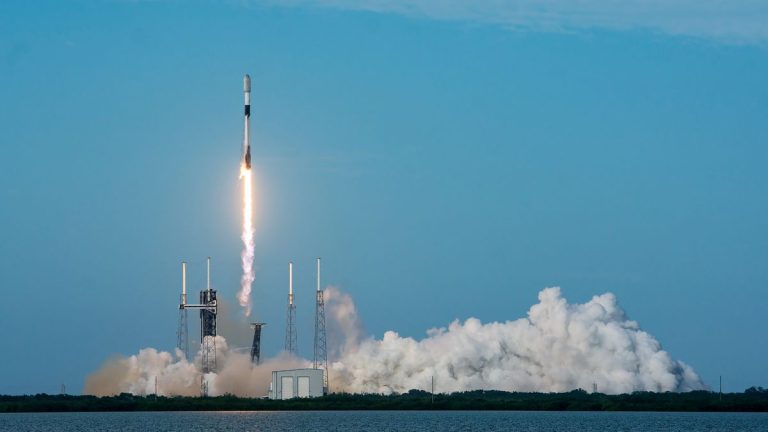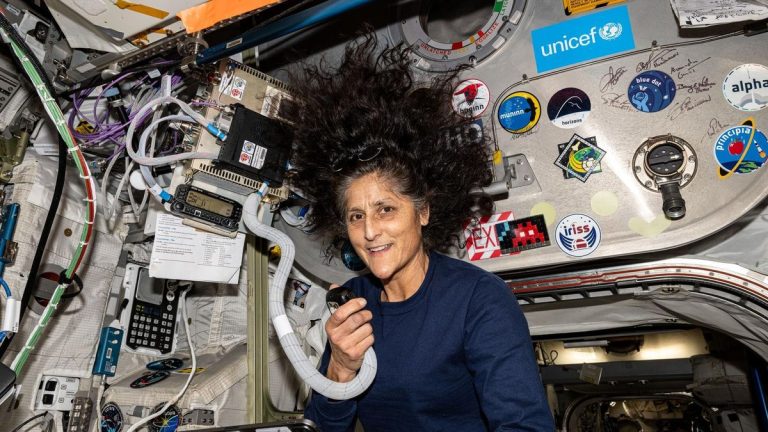
SpaceX targeting Feb. 14 for launch of IM-1 private moon mission (Image Credit: Space.com)
There will be some exciting spaceflight action on Valentine’s Day, if all goes according to plan.
SpaceX and Houston-based Intuitive Machines are targeting Feb. 14 for the launch of the private IM-1 moon mission, the two companies announced on Monday (Feb. 5).
IM-1 is scheduled to lift off atop a Falcon 9 rocket from Florida’s Cape Canaveral Space Force Station on Feb. 14 at 12:57 a.m. EST (0557 GMT), sending Intuitive Machines’ robotic Nova-C lander “Odysseus” toward Earth’s nearest neighbor.
On Feb. 22, Odysseus will try to make history, becoming the first-ever private spacecraft to land softly on the lunar surface.
“As we prepare to embark on our IM-1 mission to the moon, we carry with us the collective spirit of perseverance, fueled by the dedication and hard work of everyone on our team,” Intuitive Machines President and CEO Steve Altemus said in a statement.
“Their tireless efforts have brought us to this moment, where we stand on the precipice of history, humbled by the gravity of our mission, yet emboldened by the boundless possibilities that lie ahead,” he added.
Related: Moon mining gains momentum as private companies plan for a lunar economy
Feb. 14 is the first day of a three-day launch window; there will also be opportunities on Feb. 15 and Feb. 16, said Julianna Scheiman, SpaceX’s director of civil satellite missions. (We already knew about this month’s three-day window, but SpaceX and Intuitive Machines had not previously identified the dates.)
The two companies have been making progress toward the fast-approaching liftoff. For example, they encapsulated Odysseus inside its Falcon 9’s payload fairing on Jan. 31. Another major milestone will occur tomorrow (Feb. 7) — a fueling test of Odysseus on the pad.
“We’ll be performing essentially a tanking test, or wet dress rehearsal, for that spacecraft on February 7, and we’re tracking well to a February 14 launch,” Scheiman said on Monday during a briefing that focused on SpaceX’s planned Feb. 7 launch of NASA’s PACE Earth-observing spacecraft.
If IM-1 cannot get off the ground during this month’s three-day window, the next opportunity will come in March, SpaceX representatives have said.
Odysseus is carrying 12 payloads on IM-1. Six are commercial and six are NASA science instruments, manifested via the agency’s Commercial Lunar Payload Services program (CLPS).
CLPS aims to pave the way for a human return to the moon, which NASA’s Artemis program is working toward, by using private robotic spacecraft to get science gear to Earth’s nearest neighbor.
IM-1 won’t be the first CLPS-affiliated effort to get off the ground: Astrobotic’s Peregrine lunar lander launched Jan. 8 on the debut mission of United Launch Alliance’s new Vulcan Centaur rocket.
Peregrine suffered a fuel leak shortly after deploying from Vulcan Centaur’s upper stage, however, dashing its lunar dreams. The lander’s handlers guided Peregrine to a controlled destruction in Earth’s atmosphere on Jan. 18.








